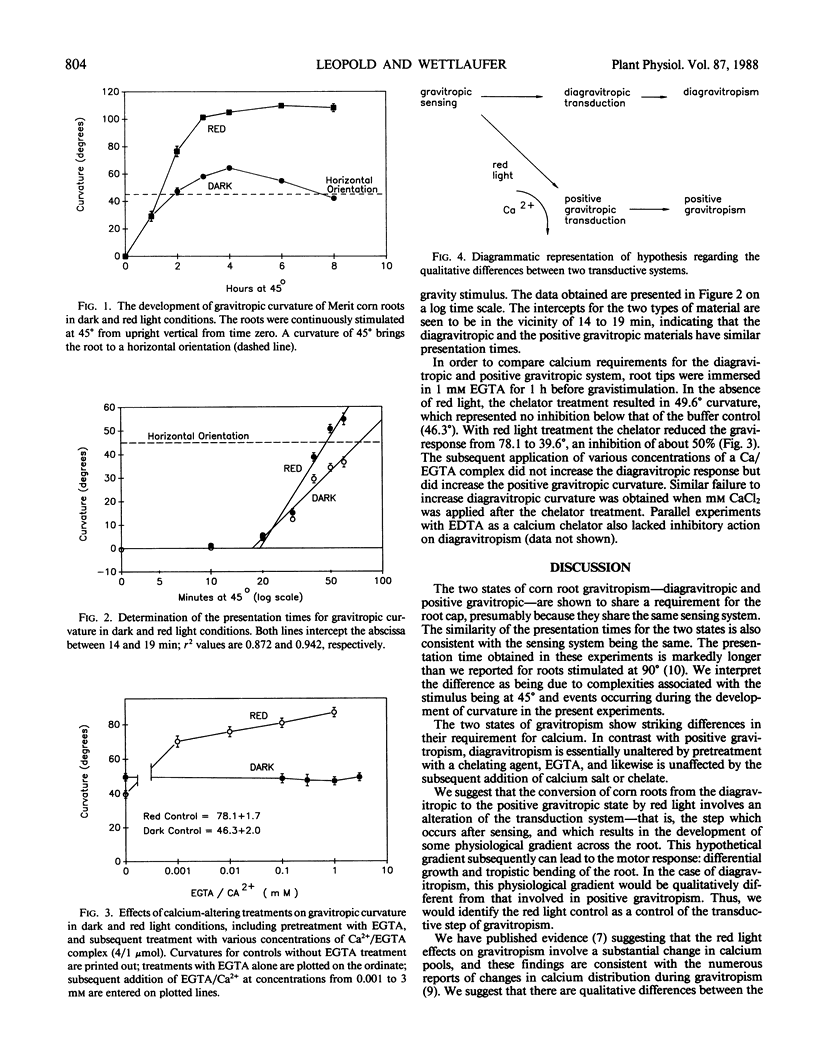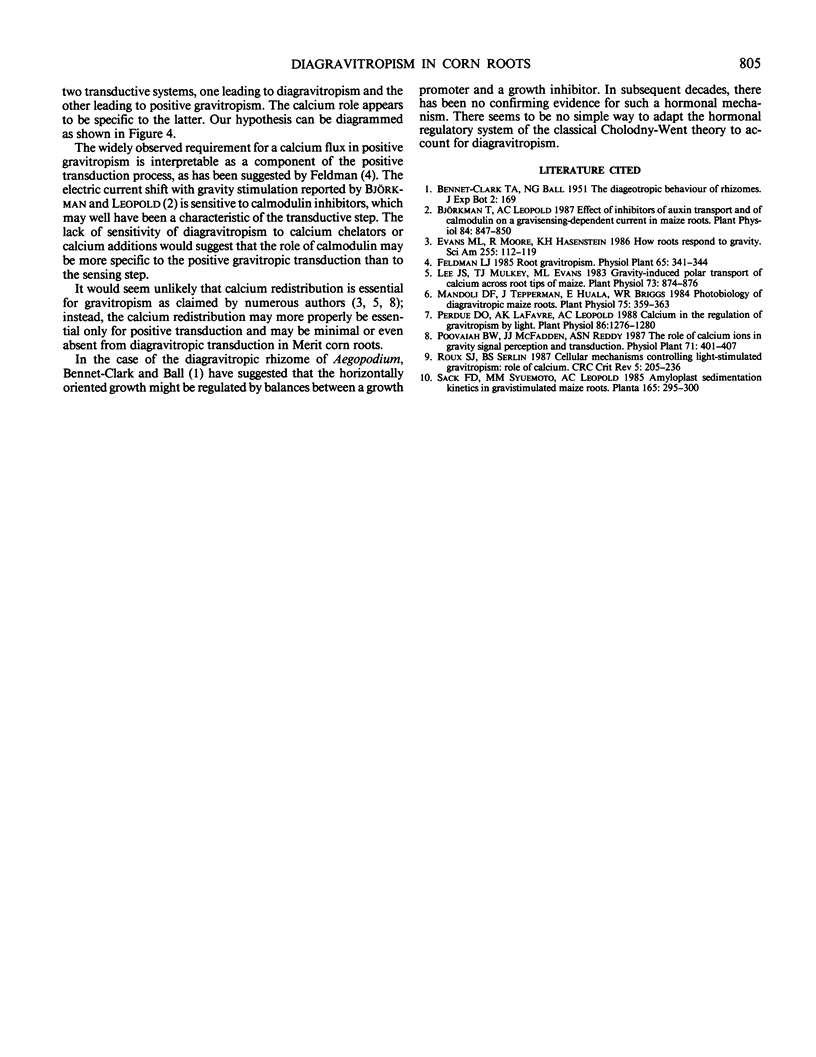Abstract
The diagravitropic behavior of Merit corn (Zea mays L.) roots grown in darkness provides an opportunity for comparison of two qualitatively different gravitropic systems. As with positive gravitropism, diagravitropism is shown to require the presence of the root cap, have a similar time course for the onset of curvature, and a similar presentation time. In contrast with positive gravitropism, diagravitropism appears to have a more limited requirement for calcium, for it is insensitive to the elution of calcium by EGTA and insensitive to the subsequent addition of a calcium/EGTA complex. These results are interpreted as indicating that whereas the same sensing system is shared by the two types of gravitropism, separate transductive systems are involved, one for diagravitropism, which is relatively independent of calcium, and one for positive gravitropism, which is markedly dependent on calcium.
Full text
PDF


Selected References
These references are in PubMed. This may not be the complete list of references from this article.
- Björkman T., Leopold A. C. Effect of inhibitors of auxin transport and of calmodulin on a gravisensing-dependent current in maize roots. Plant Physiol. 1987;84:847–850. doi: 10.1104/pp.84.3.847. [DOI] [PMC free article] [PubMed] [Google Scholar]
- Evans M. L., Moore R., Hasenstein K. H. How roots respond to gravity. Sci Am. 1986 Dec;255(6):112–119. doi: 10.1038/scientificamerican1286-112. [DOI] [PubMed] [Google Scholar]
- Feldman L. J. Root gravitropism. Physiol Plant. 1985;65:341–344. doi: 10.1111/j.1399-3054.1985.tb02405.x. [DOI] [PubMed] [Google Scholar]
- Lee J. S., Mulkey T. J., Evans M. L. Gravity-Induced Polar Transport of Calcium across Root Tips of Maize. Plant Physiol. 1983 Dec;73(4):874–876. doi: 10.1104/pp.73.4.874. [DOI] [PMC free article] [PubMed] [Google Scholar]
- Mandoli D. F., Tepperman J., Huala E., Briggs W. R. Photobiology of diagravitropic maize roots. Plant Physiol. 1984 Jun;75(2):359–363. doi: 10.1104/pp.75.2.359. [DOI] [PMC free article] [PubMed] [Google Scholar]
- Perdue D. O., LaFavre A. K., Leopold A. C. Calcium in the regulation of gravitropism by light. Plant Physiol. 1988;86:1276–1280. doi: 10.1104/pp.86.4.1276. [DOI] [PMC free article] [PubMed] [Google Scholar]
- Poovaiah B. W., McFadden J. J., Reddy A. S. The role of calcium ions in gravity signal perception and transduction. Physiol Plant. 1987;71:401–407. doi: 10.1111/j.1399-3054.1987.tb04363.x. [DOI] [PubMed] [Google Scholar]
- Roux S. J., Serlin B. S. Cellular mechanisms controlling light-stimulated gravitropism: role of calcium. CRC Crit Rev Plant Sci. 1987;5(3):205–236. doi: 10.1080/07352688709382240. [DOI] [PubMed] [Google Scholar]
- Sack F. D., Suyemoto M. M., Leopold A. C. Amyloplast sedimentation kinetics in gravistimulated maize roots. Planta. 1985;165:295–300. [PubMed] [Google Scholar]


